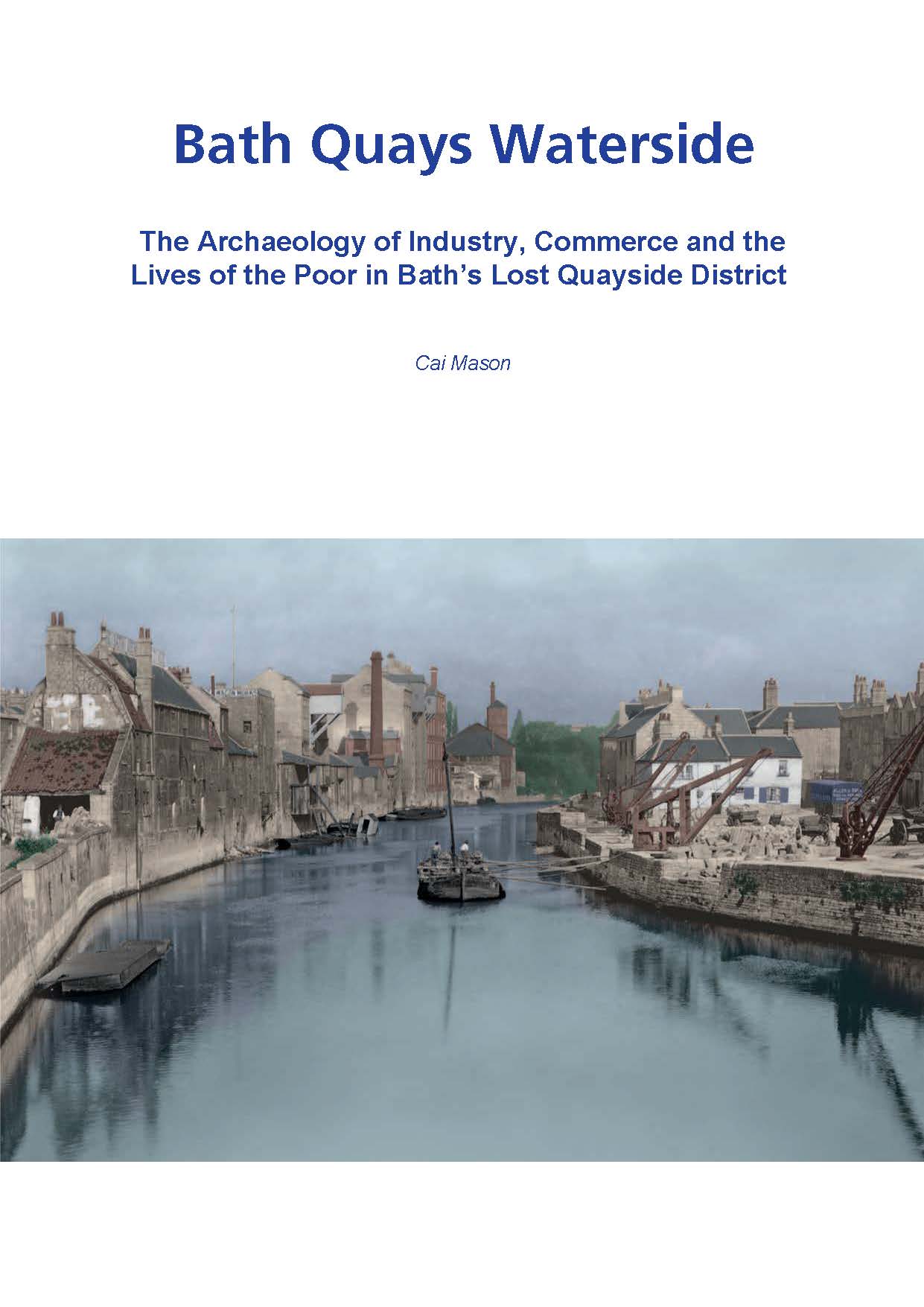Bath Quays Waterside: The Archaeology of Industry, Commerce and the Lives of the Poor in Bath's Lost Quayside District
Cai Mason

Description
Excavations ahead of the Bath Quays development in the City of Bath Worth Heritage Site provided an opportunity to excavate a strip through the heart of the former Avon Street District - a notorious areas, which was once synonymous with crime, disease and poverty. Developed in the 18th century and demolished in the early 1930s, this district was once home to 10,000 of the city's poorest inhabitants who lives in cramped dwellings nestled amongst the factories, stables, slaughterhouses, breweries, pubs and warehouses that grew up alongside the city's riverside quays.
The excavation uncovered limited evidence for pre-18th-century activity, including a medieval watercourse that served as an outfall for the city's western geothermal springs, and the foundations of a late medieval or early post-medieval crenellated wall that flanked it.
Development of the area began in the late 1720s with the construction of a quay and laying out of the district's eponymous main street, which was lined with well-built townhouses designed to accommodate wealthy visitors to the spa. The proximity of the busy quayside, and the warehouses and insalubrious industries that sprang up around it, soon led to an exodus of wealthier patrons to more fashionable lodgings in upper parts of the city. Having lost their affluent tenants, landlords sought to maximise their revenues by subdividing and extending houses and infilling gardens with courts of blind-back and back-to-back houses: a process that was largely complete by the late 18th century. During this period Avon Street acquired a fame of sorts, though not for the reason its architects had intended: it had become the city's principle red-light district.
In the 19th century, the area remained densely occupied, poor and lawless, but from the 1840s onwards, it also became increasingly industrialised. New businesses, including brass and iron foundries, dye works, engineering firms and timber mill, provided skilled work for many, but at the expense of an increasingly polluted environment. At the same time, concern about living condition in Britain's cities, and a fear of social disorder and epidemic disease, prompted a range of reforms designed to improve the health of the urban population. This included improvements to sanitation, provision of piped water, and the construction of public washhouses, one which, the Milk Street Baths was built along the quayside. The stream-powered institution, which opened in 1847, is the earliest well-preserved public washhouse to have been archaeologically excavated.
The archaeological work, coupled with extensive documentary research, has allowed the physical remains and artefacts to be linked to some of the area's colourful and diverse inhabitants.
Details
| Published | Published By | Pages | ISBN | ||||||||||||||||||||||||||||||||||||||||||||||||||||||||||||||||||||||||||||||||||||||||||||||||
|---|---|---|---|---|---|---|---|---|---|---|---|---|---|---|---|---|---|---|---|---|---|---|---|---|---|---|---|---|---|---|---|---|---|---|---|---|---|---|---|---|---|---|---|---|---|---|---|---|---|---|---|---|---|---|---|---|---|---|---|---|---|---|---|---|---|---|---|---|---|---|---|---|---|---|---|---|---|---|---|---|---|---|---|---|---|---|---|---|---|---|---|---|---|---|---|---|---|---|---|
| Jan. 1, 2020 | Wessex Archaeology | 136 | 978-1-911137-16-0 | ||||||||||||||||||||||||||||||||||||||||||||||||||||||||||||||||||||||||||||||||||||||||||||||||
| License Information | |||||||||||||||||||||||||||||||||||||||||||||||||||||||||||||||||||||||||||||||||||||||||||||||||||
| Copyright © Wessex Archaeology. This work is openly licensed via CC BY-NC-ND 4.0 | |||||||||||||||||||||||||||||||||||||||||||||||||||||||||||||||||||||||||||||||||||||||||||||||||||
